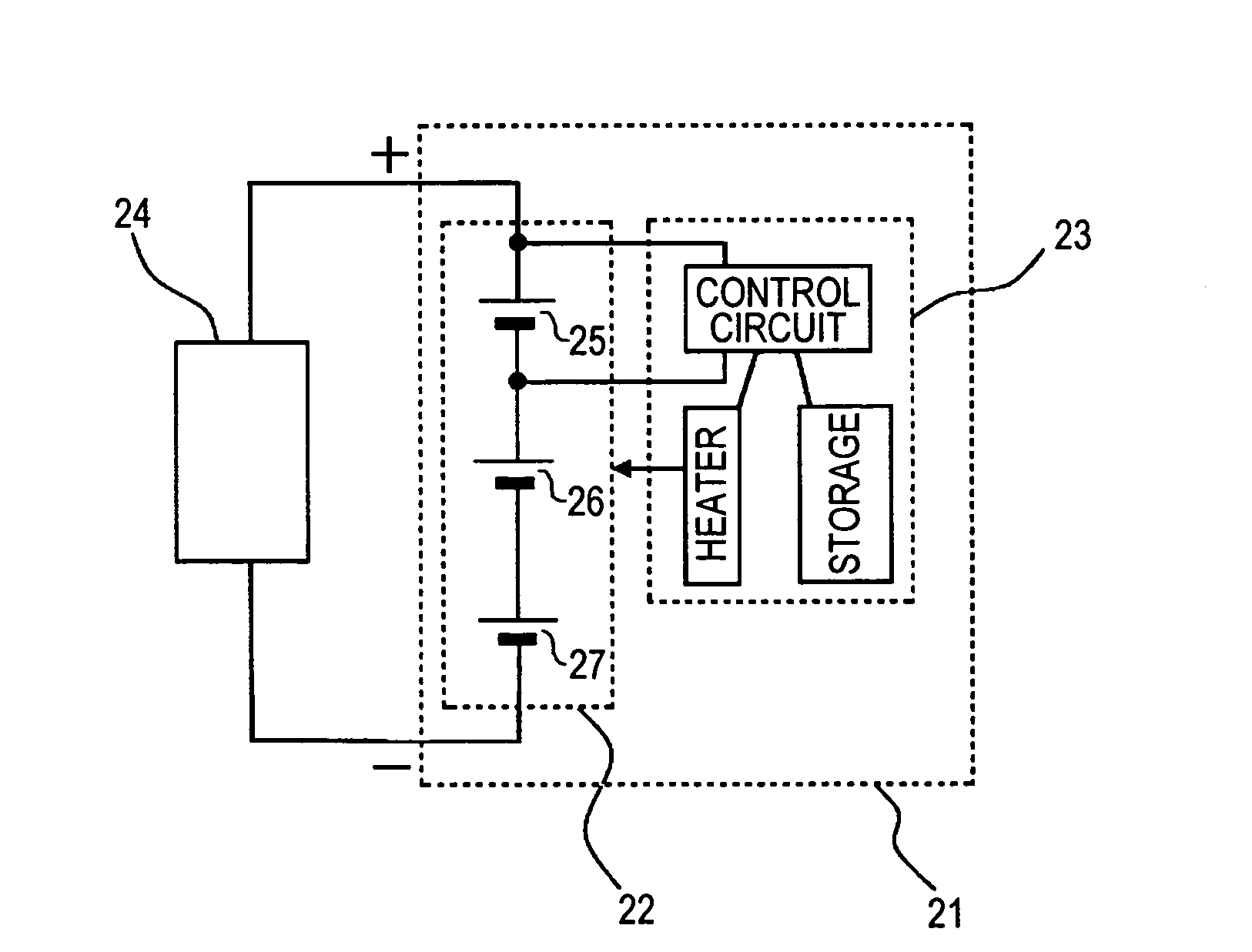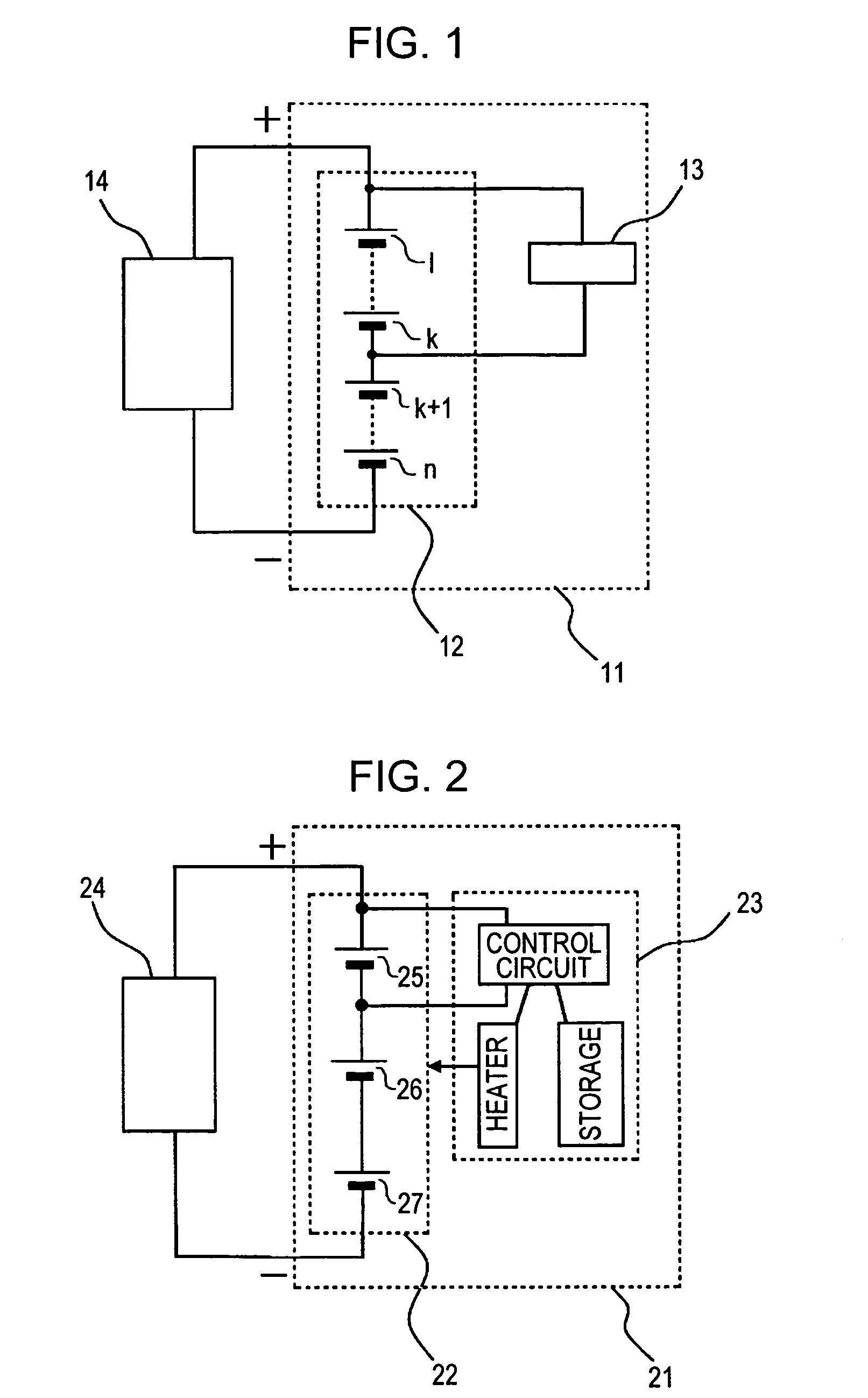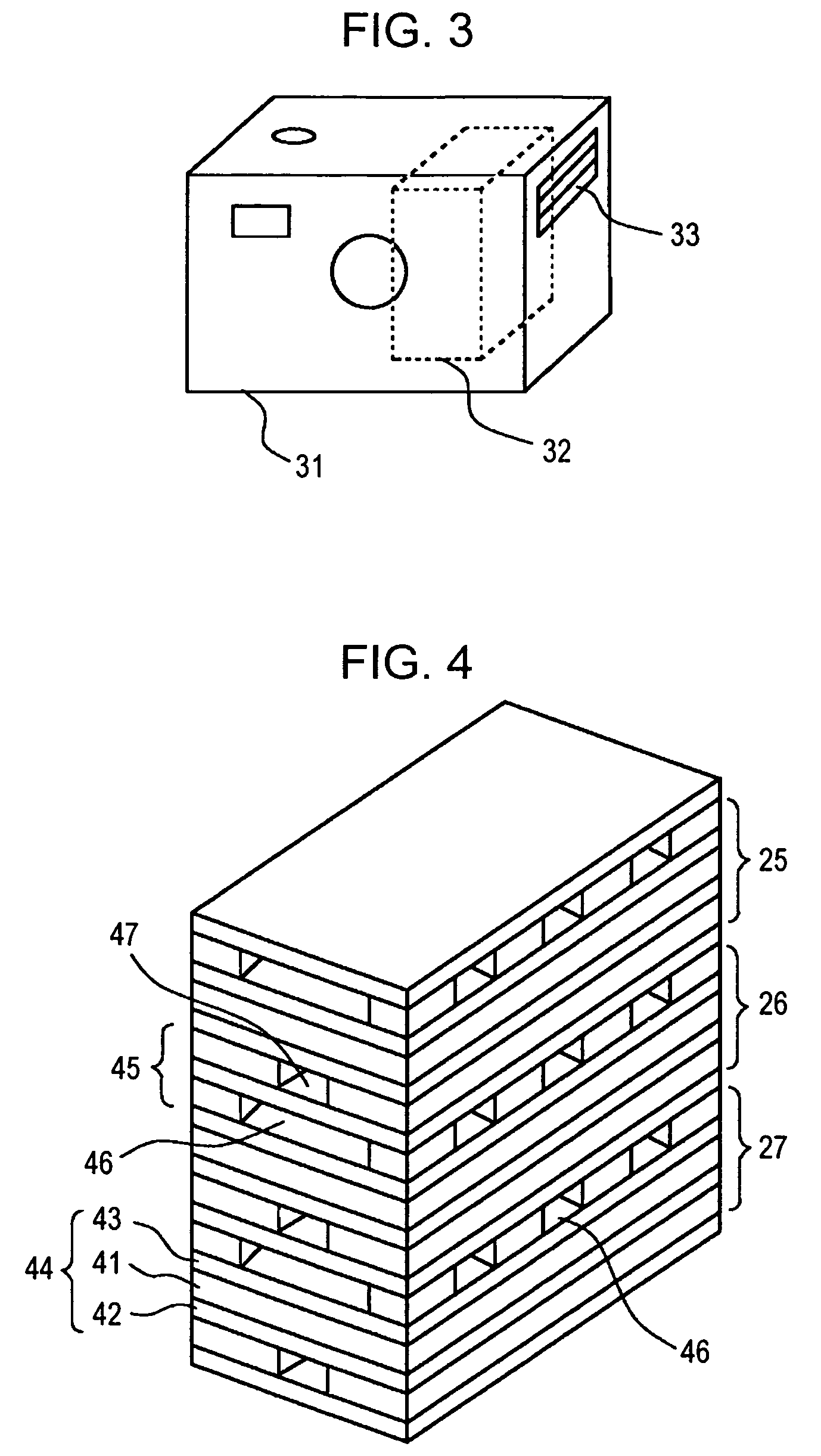Fuel cell apparatus having fuel cell stack and controller, and method of manufacturing same
a fuel cell and controller technology, applied in the manufacture of final products, cell components, cell component details, etc., can solve the problems of reactant depletion, short-circuit current decrease, uneven power generation characteristics, etc., and achieve the effect of high power generation density
- Summary
- Abstract
- Description
- Claims
- Application Information
AI Technical Summary
Benefits of technology
Problems solved by technology
Method used
Image
Examples
first embodiment
[0045]FIG. 2 shows a fuel cell apparatus 21 according to a first embodiment of the present invention. A reference number 22 is a fuel cell stack, a reference number 23 is a control means, and a reference number 24 is an electric device driven by the fuel cell apparatus. The fuel cell apparatus is installed in a housing of an electric device 31 shown in FIG. 3. A reference number 32 is a position where the fuel cell stack is arranged, and a reference number 33 is an air hole provided to the housing of the electric device.
[0046]FIG. 4 shows a fuel cell stack used in this embodiment. An electrolyte electrode assembly 44 includes an electrolyte membrane 41, a fuel electrode 42 on one face of the electrolyte membrane 41, and an oxidizer electrode 43 on another face of the electrolyte membrane 41. The electrolyte electrode assemblies are stacked so that the fuel electrode of one electrolyte electrode assembly faces the oxidizer electrode of another electrolyte electrode assembly adjacent ...
second embodiment
[0051]This embodiment relates to a fuel cell apparatus using a planar fuel cell stack. FIG. 6 is a schematic view of the fuel cell apparatus. A reference number 62 is a fuel cell stack, and a reference number 64 is an electric device driven by the fuel cell apparatus. This fuel cell apparatus utilizes oxygen and hydrogen supplied from the outside to generate electric power. A controller, such as control means 63, controls flow rates corresponding to output of the fuel cell stack and supplies oxygen and hydrogen to the fuel cell stack.
[0052]FIG. 7A shows cross-sectional views of each member of the planar fuel cell stack, and FIG. 7B shows the plan views of them. As shown in the drawings, fuel electrodes 72 and oxidizer electrodes 73 are formed on both faces of an electrolyte membrane 71, respectively. A fuel channel 74 for supplying hydrogen to the fuel electrodes is formed so as to be in contact with the fuel electrodes, and an oxidizer channel 75 for supplying oxygen to the oxidize...
PUM
| Property | Measurement | Unit |
|---|---|---|
| electromotive force | aaaaa | aaaaa |
| electric power | aaaaa | aaaaa |
| short-circuit current | aaaaa | aaaaa |
Abstract
Description
Claims
Application Information
 Login to view more
Login to view more - R&D Engineer
- R&D Manager
- IP Professional
- Industry Leading Data Capabilities
- Powerful AI technology
- Patent DNA Extraction
Browse by: Latest US Patents, China's latest patents, Technical Efficacy Thesaurus, Application Domain, Technology Topic.
© 2024 PatSnap. All rights reserved.Legal|Privacy policy|Modern Slavery Act Transparency Statement|Sitemap



